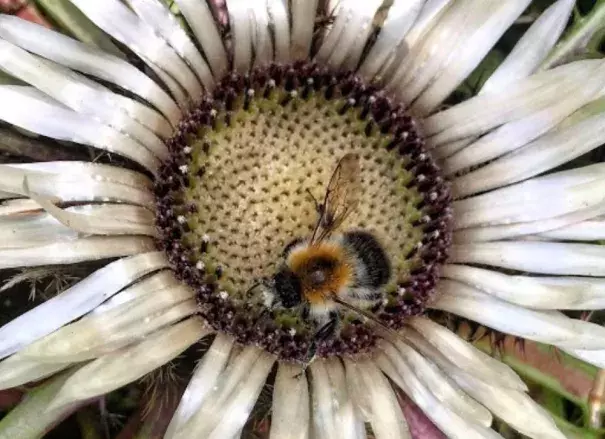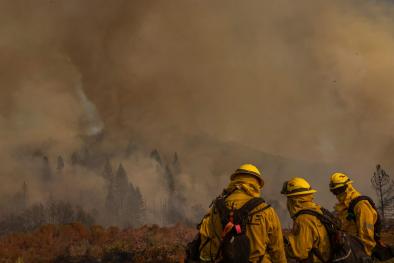Bumblebee Decline Linked With Extreme Heat Waves

Signals Summary: Climate change is increasing the frequency and intensity of extreme heat and severe heat waves.
Article Excerpt: Type "bumblebees" into Google and one of the first results is a University of Minnesota webpage describing how the furry, flying pollinators have "special adaptations for colder weather including their long, thick hair, and are more commonly found in colder climates."
That's a good clue that they will face challenges in a warming world, and new research by scientists at the University of Ottawa suggests that extreme heat waves have already driven some local North American and European bumblebee populations to the edge of extinction.
Measurements of bumblebee species over time "provide evidence of rapid and widespread declines across Europe and North America," the authors of the study wrote. More frequent extreme heat waves with temperatures higher than bees can tolerate help explain the "widespread bumblebee decline," they added.
Bumblebee populations have been hardest hit in warming southern regions such as Spain and Mexico, where some species already live near the edge of their temperature range. Sometimes it just gets so hot that bees die and fall out of the sky, said University of Ottawa biologist Peter Soroye, lead author of the study, published Thursday in the journal Science.
"Bumblebees are disappearing from areas eight times as fast as they are recolonizing others," he said. "They are the best pollinators in wild landscapes and really important for crops like tomatoes, squash and berries."
...
The new study also suggests that extreme heat poses risks for other species, including mammals, birds and reptiles. Bumblebees are an indicator species, he said.
"We were trying to answer the question, 'Is climate change causing extinctions'? We decided to use bumblebees as a test example, and it turns out they work really well," Soroye said. "In theory, these ideas are really universal for birds, reptiles and mammals."
...
Bumblebee populations are dwindling because of habitat loss and increasing pesticide use, and global warming makes for a triple whammy that is killing off some populations. Honey bees, which were imported to North America by European colonizers, are also struggling, because of exposure to pesticides and the spread of parasitic Varroa mites.
Inouye said those threats to bumblebees and honey bees matter a great deal to humans and other species that depend on fruits, vegetables and nuts that require pollinators—animals that move pollen between flowers to fertilize seeds.
...
The study is part of a relatively new area of research linking the global biodiversity crisis with climate disruption, much of it done by younger researchers. Soroye, for example, is in an age group for whom global warming is part of nearly every biological equation. They are not asking "if" global warming drives biodiversity decline. They want to know how that happens and what can be done about it.
The current biodiversity crisis is "entirely driven by human activities," Soroye said, and stopping it requires knowing where and why the extinctions happen. For bumblebees, that means understanding direct heat mortality, as well as threats to ground-nesting colonies from increased precipitation linked to global warming. And global warming also disrupts seasonal plant-pollinator cycles. Warm weather earlier in late winter or early spring, for example, can make some plants bloom too early, before bumblebee colonies are active, and by the time they emerge, their source of food may be dwindling or gone.
Related Content



